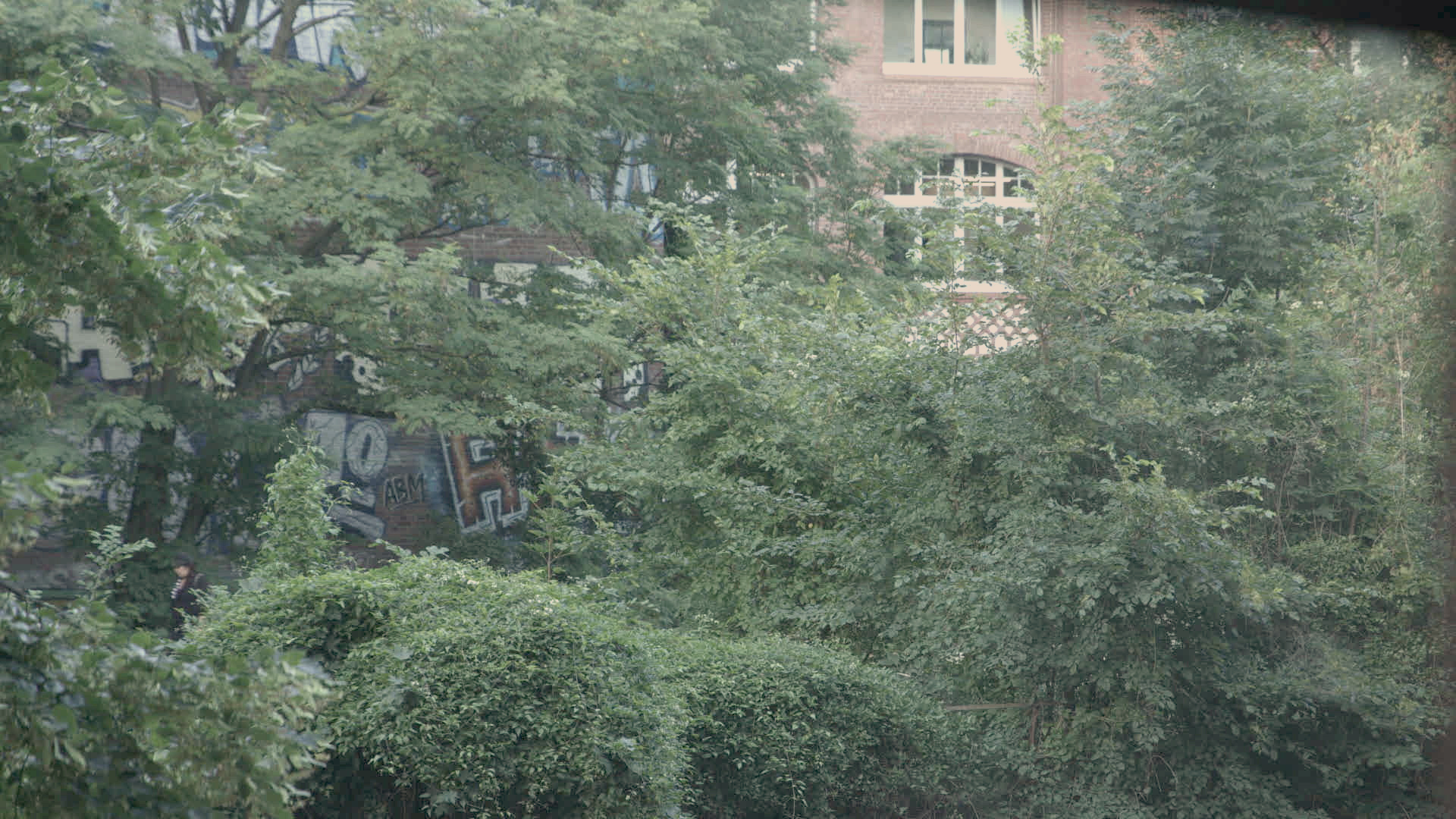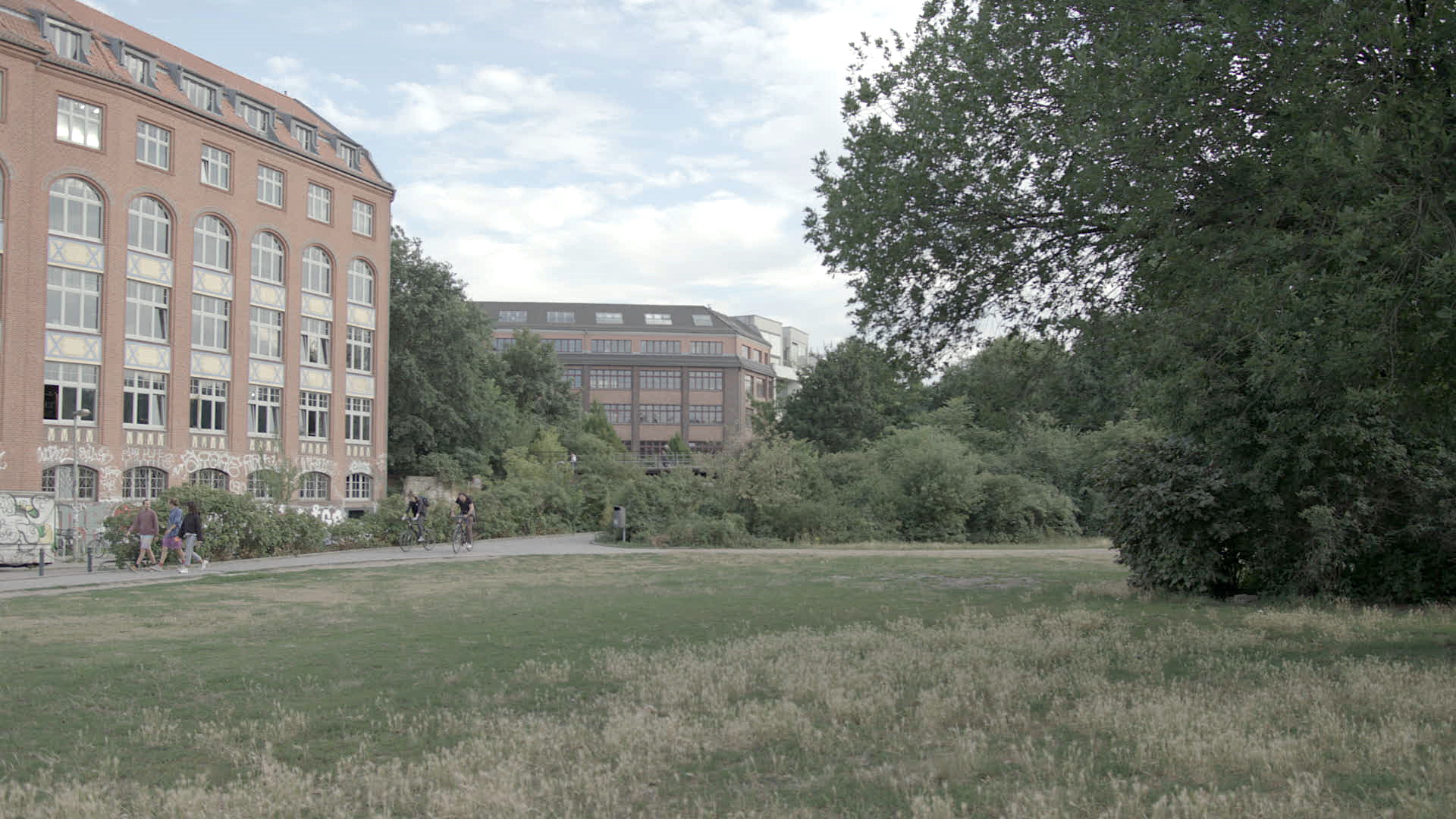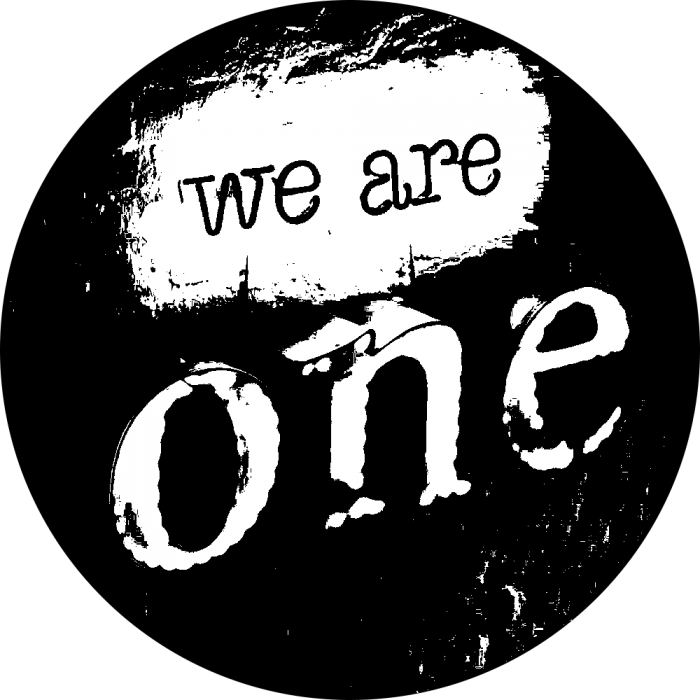Making a Life, Not Just a Living
Making a Life, Not Just a Living
“What’s Neumann’s ultimate vision for the company? ‘WeWork Mars,’he says.”1
As I begin this text, I am sitting in a tiny office space that I rent together with a couple of friends. As of last year, our floor is the only one left in the whole office building that houses individual creative workers and other small or solo companies. The remaining three floors have been occupied by a new experience design company. The sudden influx of mostly male white-collar workers into the nearby lunch places can probably be further explained by the recent arrival of a real estate developer that manages huge premises for co-working in another building nearby. Besides solitary entrepreneurs of Berlin, they also host a few offices of multinational corporations in the city. On the opposite side of the street there is, as I find out online, Wagenburg Lohmühle—a group of people who, since 1991, have been living in construction or transportation trailers, occupying a strip of land that previously belonged to the Berlin Wall.
Thus I am reminded of a similar intersection mapped out by the architecture historian Felicity Scott. She describes the processes of the 1960s that translated the “society of control” and neoliberal governance into architecture through an analysis of forms that either conformed to this societal model or sought for autonomy from it. Scott places the newly introduced concept of the corporate office by architect Kevin Roche in parallel with the concurrent Open Land movement and the formation of illegal farming communes in North California. Whereas Roche’s propositions for the UN Center and the Ford Foundation Headquarters, both in New York, are examples of an understanding of the corporation’s employees as its greatest creative resource that justifies the design in terms of “improved productivity” (in the architect’s own words)2, the Open Land movement activists manifested an image of seeking “autonomy and withdrawal from the same biopolitical management techniques,” withdrawing “from the points at which these techniques systematically met the body and psyche of contemporary subjects in their everyday lives.”3
Witnessing a similar map coming into shape in front of my eyes is just as useful an anecdote for considering these mechanisms. For the last four years, we have been working together with filmmaker Marta Dauliūtė on the documentary Good Life, mapping out the “entrepreneurial subject”—a subject which, according to sociologists Pierre Dardot and Christian Laval, enacts the new form of neoliberal management. The entrepreneurial self, an identity that goes beyond just mere profession, is a new way power is exercised—a mode of control where the previous mechanisms of discipline and control become internalized in one’s own psyche. As per Pierre Dardot and Christian Laval, “The main innovation of neoliberal technology precisely consists in directly connecting the way a man ‘is governed from without’ to the way ‘he governs from within.’”4 We were curious to document how such an identity is created and reproduced, and found its manifestations in a co-working space, startup incubator or an innovation hub the most interesting incarnation to follow.

Before even acknowledging the fact that the co-working space is quite literally encroaching upon my own space and becoming a standard mode of organizing workspace, we recognized how our own life is already occupied by entrepreneurial subjectivity. The figure of the entrepreneur is an embodiment of perceived flexibility, efficiency, competitiveness, never-ending opportunism, and an imperative to always desire more as a new mode of being in the world. When all work is viewed as entrepreneurship, the new identity of the flexible entrepreneur is itself also unfixed: you are an employee, a contractor, and unpaid worker at the same time. Life as a whole becomes an enterprise.
Co-working space is designed to accommodate such life: its leisurely furniture, expansive zoning in terms of space—from cubicles for Skype calls to a “nap room”—and time—from morning yoga classes to community meetups. How does co-working architecture and the narratives surrounding it manifest as a “technique meeting the body and psyche of contemporary subjects”?
The most advanced blueprint of the co-working business ambition of the current timet is probably WeWork. Started in 2008 as Greendesk, WeWork claims to provide, at time of writing, 456 locations in 87 countries around the world, part of a rapidly expanding enterprise with a plan of opening a new location every month. Its co-founding duo of entrepreneur Adam Neumann and designer Miguel McKelvey constantly emphasize the importance of “spatial programming.” As the company is also entering into the process of developing its own buildings, in 2018 it announced a continued partnership with “starchitect” Bjarke Ingels, whose firm BIG previously designed Google’s new California headquarters as well as Elon Musk’s Hyperloop One transportation system. Following his collaboration on the expansion of the WeWork concept—a school called WeGrow—Ingels was appointed Chief Architect of WeWork.
Besides WeGrow, the company also runs also another branch called WeLive, a co-living space. All three ventures have been described by Neumann as expanding into “a larger category of life”:
“80,000 companies have replicated us and tried to open up co-working spaces around the world. But their mistake is that we are not a coworking space—I am not sure what they are copying. The interesting thing is, if you think of Amazon and books, and how Amazon used books to enter into the larger category of e-commerce, WeWork is using desks and co-working to enter into a larger category of life. What’s bigger than human capital? Where do you spend more hours of the days than in the office? And right after WeWork comes WeLive, where we can supply you with a world, where, if you choose to, you can be a global member of this Earth, you can be a member of We. And with that membership you have access to physical space all over the world, you have friends, you have colleagues, you have customers, you have houses and apartments globally, you can live two months in each place, you can live a year in the same place... We just launched WeGrow, which is our new school, so you can send your kids into a school where we help; our mission in the school is to unleash every child’s superpower.”5
Co-living seems a logical next step to accommodate the needs of the entrepreneurial subject and Neumann’s and McKelveys venture is not the only trailblazer—there are companies like Rent24 in Berlin (“work·live·grow”) or The Collective in London (“A new way to live, work and play”) among many others. We spent a month in one of the co-living startups in Europe that is also envisions an expansion into 100 locations around the globe. The common denominators of such spaces are: higher rent per square meter than in regular real estate, “curated” groups of inhabitants, management through self-organization of the members, self-development programs, and what is also being called “serviced living”—regular catering and cleaning services. While there are examples of co-living that appear to be bottom-up initiatives on a small scale, the most prominent ones are usually backed by venture capital and operated as a corporation with its usual hierarchical structure of a CEO, Head of Recruitment, Community Manager etc. in place. Despite what one might expect, it does not seem that any co-living space would position itself in reference to a long history of communal living—be it housing cooperatives, Open Land farms, kibbutzes, or paper ideas of the avant-garde architects in the early days of the Soviet Union…
Housing cooperatives, so-called baugruppen, and even the tiny-house movement have always been conventionally understood as, if not a desire for life off-the-grid, then a certain claim for political autonomy that is achieved through self-organization and collective action.
Human empowerment is also the most prevalent promise of the co-living business. However, here the empowerment follows the same logic of workplace empowerment: providing a most pleasant and smooth experience, healthy social relations in order to guarantee increased productivity, improved networking skills, and efficiency.

While co-working spaces look more and more like home and co-living spaces increasingly resemble an office in the way they both blur the distinction between working and private life or “free time,” the space of community and self-organization within the co-living vision is at least partially informed by the external influence of an algorithm. The “culture” that Neumann constantly emphasizes as the most important part of the company is interlinked with algorithmic management and data tracking.
“WeOS is the operating system of the physical space, so starting with simple things—how you enter the building, and then how you book a conference room, how you register a guest. But from that point on you can start layering more and more things onto the physical graph, that can control interactions between an individual, a place and the time that they want to do it. And the more we can track those different things, the more that we can give better services to the individuals that are interested in it. With enterprise for example, you can have a great company with an awesome common space, but no one uses it. We would be able to see through sensors and different aspects of the WeOS that that space is not being used and we allocate it to something more meaningful. Because at the end of the day, we are trying to help our members to create their life’s work and not just a living, and for that we want them to have an amazing experience. These are all things that help us create a better experience.”6
The inhabitants of smart co-living places are going to be tracked for their presence, have the temperature of the artificial lighting in their pods aptly adjusted according to the time of the day or even their mood, and receive mindfulness instructions transmitted directly from the control panel of their individual compartment—these are some of the future developments that were presented to us while we documented a co-living prototype in the making.
In the eyes of the system’s creators, it is all for the sake of the improved wellbeing of the inhabitant.
This could be one more reason why co-living is not in line with the history of autonomous and communal living, but rather with the evolution of Organisationskybernetik, a concept developed by Wolfgang and Eberhard Schnelle from the late 1950s onwards and researched by architect Andreas Rumpfhuber in his book Architecture of Immaterial Labor.7 Schnelle’s model of Bürolandschaft—“office-landscape”—claimed an egalitarian, self-organized, and radically democratized workspace with its flexible architecture that can adapt to changes in the work processes, evoking a democratic work atmosphere. Motivation of the worker was inscribed by including leisure space into this office architecture—a break room designed as a modern living room, thus incorporating “reproduction within the space of production” that, according to Rumpfhuber, signifies “the wholesale redundancy of office buildings and workplace architecture in general” as an outcome of industrial and administrative automation.8
The evolution of business into co-living means not only that being inspired in the office space is not enough and one needs networking opportunities and inspiration 24/7, it also responds to the processes that turned the bedroom into a contemporary workplace. Beatriz Colomina writes that, “between the bed in the office and the office in the bed, a whole new horizontal architecture has taken over. It is magnified by the ‘flat’ networks of social media that have themselves become fully integrated into professional, business, and industrial environments in a collapse of traditional distinctions between private and public, work and play, rest and action.”9 The irony is that I am finishing the last few lines of this text while lounging in my bed, the blue light of the screen softly dispersing onto the dusky silhouettes of the room.

Just as my own bed has been my office too many times, the co-living space bed in particular might be “the final stage of housing, domestic space, and leisure itself as the capitalist frontier.”10
If there is no “outside” of work in co-living space and life equals enterprise: the co-living space is a perfect “social factory.” A social factory, which, according to Stefano Harney, is an outcome of a new rhythm of work imposed on a global scale, what he calls “contemporary operations management,” that is preoccupied with an assembly line process of cognitive and affective labor that has no outside. Owing to the analysis of Frantz Fanon, he notes that the first such social factory of European work rhythm was the colony, “where worker replaces subject in society as a whole. In the colony, in the first social factory, any move to other social being was, as it is today, criminal, conspiratorial. The only sound in the social factory is the rhythm of work because that is what takes place in a factory.”11
While the (for now) still existing Wagenburg Lohmühle reminds us, as many other initiatives, that it is possible to claim autonomy from neoliberal governance of everyday life, it is, however, hard to do so once life has itself become an enterprise; one does not need to wait for a co-living business to take over. How will we find the processes to define autonomy and withdrawal anew when in the meantime co-living business will not settle for less than Mars?
- 1. Maya Kosoff, “How WeWork became the most valuable startup in New York City,” in Business Insider, Oct 22, 2015. https://www.businessinsider.com/the-founding-story-of-wework-2015-10?IR=T.
- 2. Felicity Dale Scott, Outlaw Territories: Environments of Insecurity / Architectures of Counterinsurgency (New York: Zone Books, 2016,) 70.
- 3. Scott, 111–113.
- 4. Pierre Dardot and Christian Laval, The New Way of the World: On Neoliberal Society (London, New York: Verso, 2013), 264.
- 5. Adam Neumann, “WeWork + Conductor Fireside Chat Keynote” at C3 2018, May 6, 2018, video, 05:17, https://www.youtube.com/watch?v=L1IM-SyFoCw.
- 6. Adam Neumann, “Optimizing space itself with WeWork's Adam Neumann” at Disrupt NY 2017, May 15 2017, video 08:44, https://www.youtube.com/watch?v=-EKOV71m-PY&feature=youtu.be.
- 7. Andreas Rumpfhuber, Architektur immaterieller Arbeit (Wien, Berlin: Turia+Kant, 2013),72.
- 8. Andreas Rumpfhuber, “Housing Labor, Artificial Labor,” e-flux, June 28, 2017, https://www.e-flux.com/architecture/artificial-labor/140678/housing-labor/.
- 9. Beatriz Colomina, “The 24/7 Bed,” in Work, Body, Leisure., Ed. Marina Otero Verzier, Nick Axel (Berlin: Hatje Cantz, 2018)https://work-body-leisure.hetnieuweinstituut.nl/247-bed.
- 10. Andreas Rumpfhuber, “Housing Labor, Artificial Labor.”
- 11. Stefano Harney, “Hapticality in the Undercommons, or From Operations Management to Black Ops,” https://www.academia.edu/6934195/Hapticality_in_the_Undercommons_or_From..., 4.


